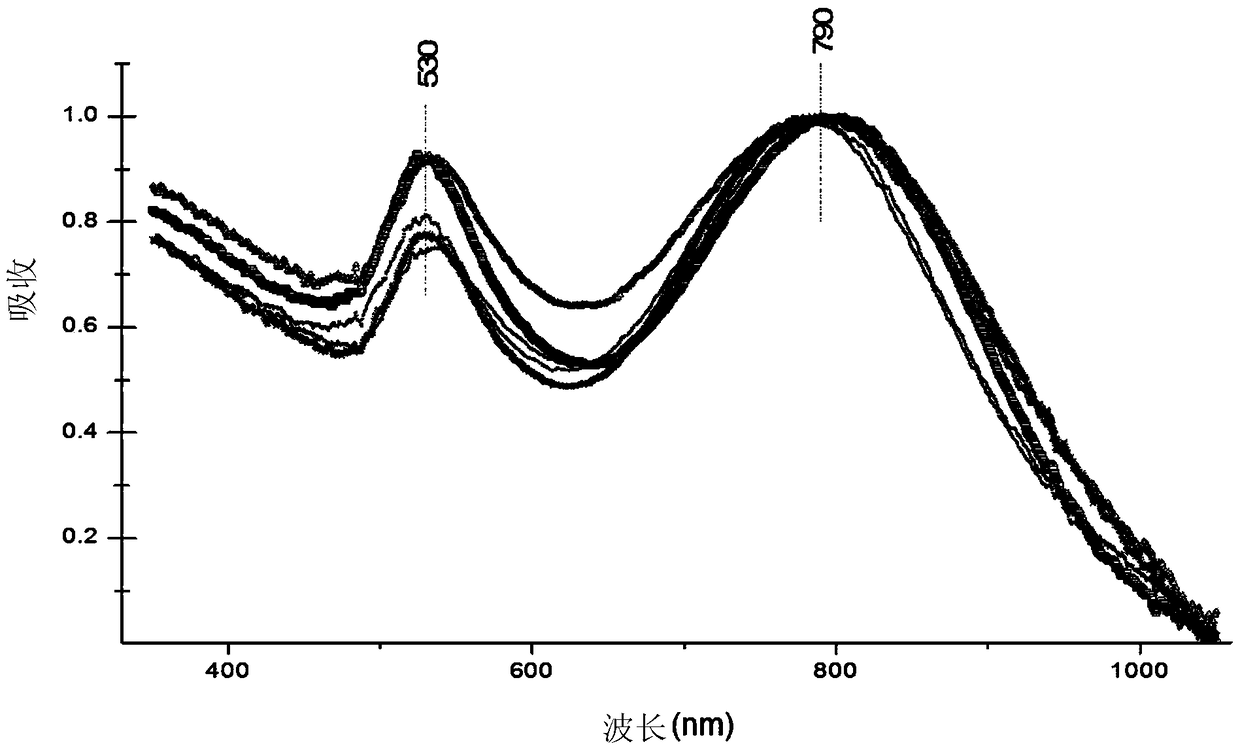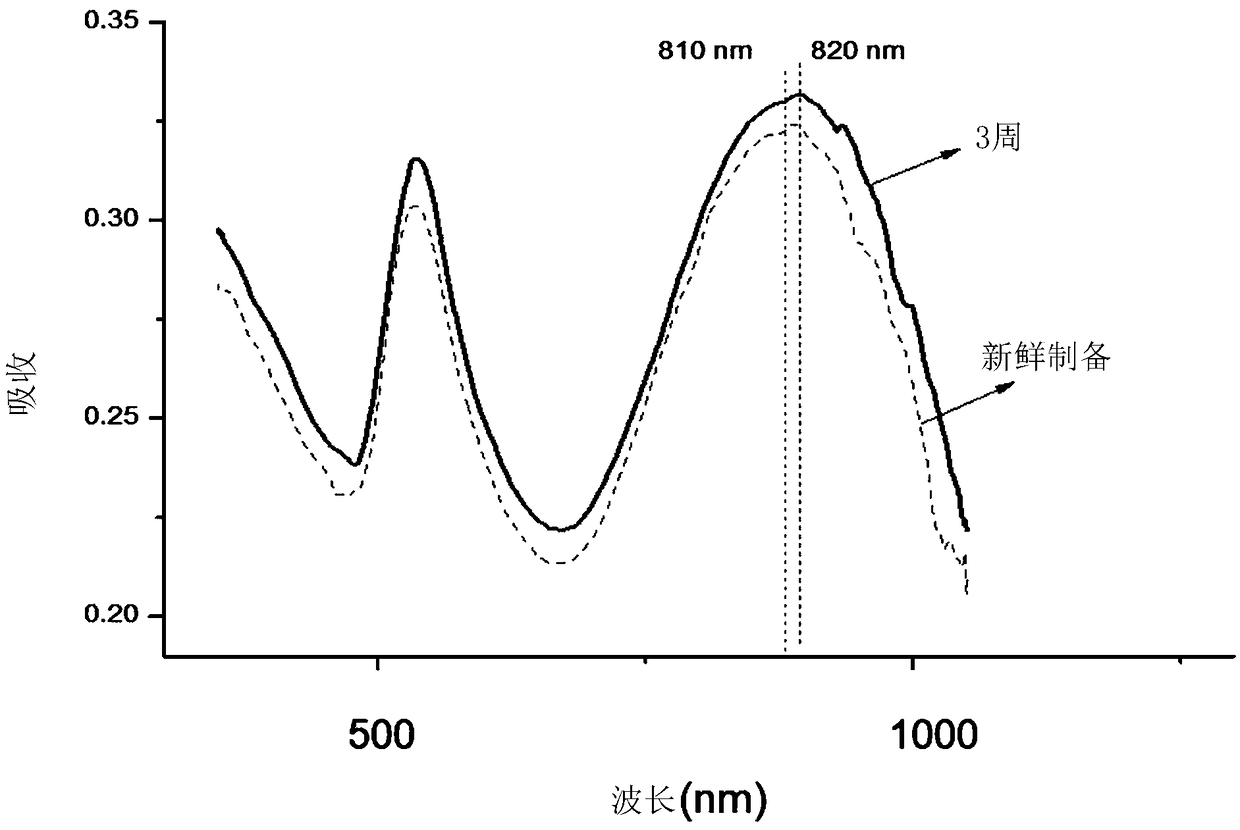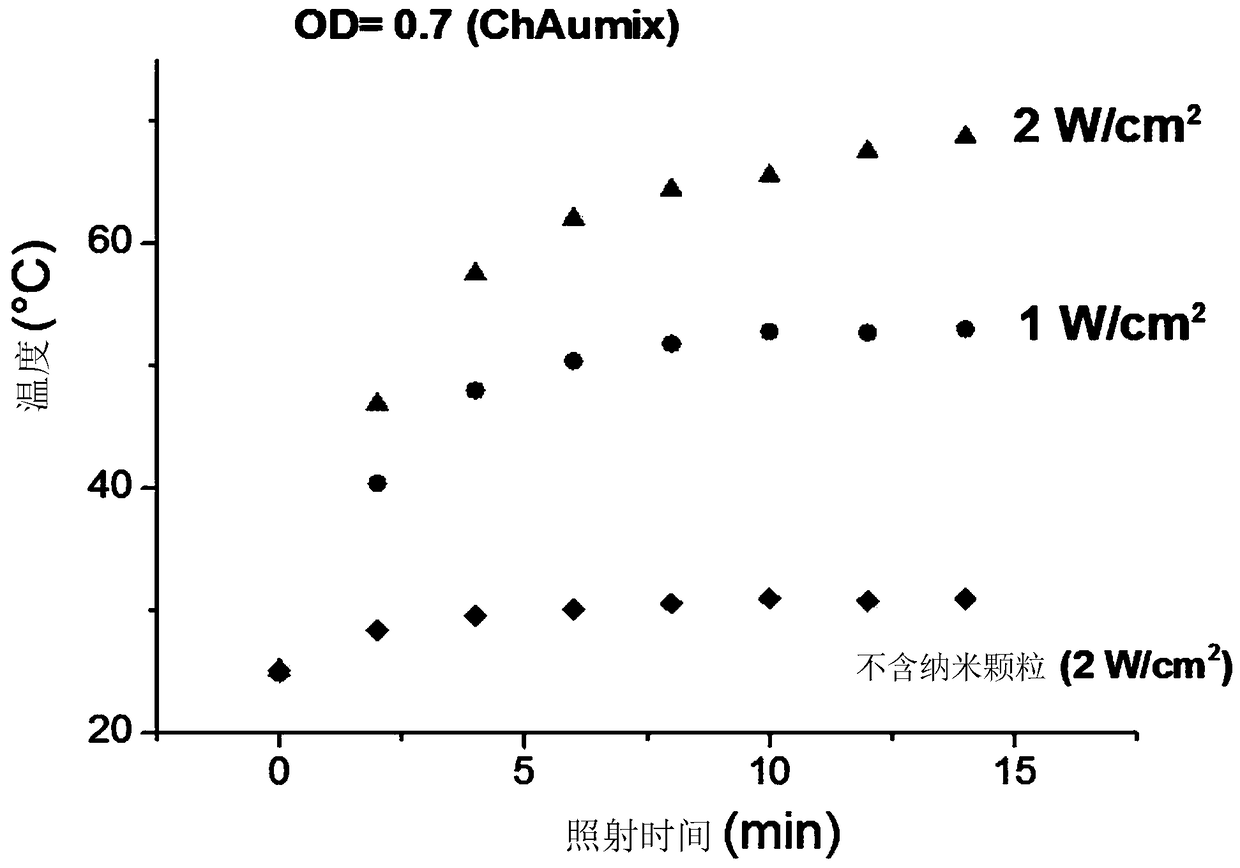Cells loaded with gold nanoparticles for use in the diagnosis and/or treatment of melanoma
A nanoparticle and cell technology, which is used in preparations for in vivo experiments, wave energy or particle radiation treatment materials, antitumor drugs, etc.
- Summary
- Abstract
- Description
- Claims
- Application Information
AI Technical Summary
Problems solved by technology
Method used
Image
Examples
Embodiment 1
[0042] Example 1 - Synthesis of Gold Nanoparticles
[0043] At room temperature (25°C), 0.5ml Na 2 S 2 o 3 The aqueous solution was quickly added to 2.5ml HAuCl 4 In aqueous solution, the gold / thiosulfate molar ratio is 2.6. The solution was kept on a vortex mixer for 20 seconds and then allowed to stand for about 10 minutes, during which time a color change was observed, from yellow to brown to dark red. Completion of the reaction was confirmed by recording the UV-Vis spectrum of the solution after 30 minutes and then again at a time interval of 10 minutes. 0.09 ml of 0.1% (w / v) high molecular weight chitosan (~10 6 Da; degree of deacetylation 79%) in acetic acid solution (concentration 1% (v / v)). The final concentration of gold was 1.4 mM. The colloidal solution thus obtained is then left under slow stirring for 6-12 hours and then autoclaved.
[0044] The preparation process described above was repeated by varying the gold / thiosulfate molar ratio, in particular wi...
Embodiment 2
[0046] Example 2 - Characterization of Gold Nanoparticles and Chitosan Solutions
[0047] The colloidal solution obtained as described in Example 1 above has been studied to evaluate the stability over time under continuous irradiation, thermal conductivity and photothermal stability.
[0048] Still based on the UV-Vis absorption spectrum, the stability over time of the solution prepared as described above can be confirmed by recording the same solution freshly prepared and after a period of 3 weeks of maturation, whereby essentially superimposed spectra are obtained, as figure 2 shown. Similar results were obtained by extending the maturation time of the colloidal solution to 15 weeks after preparation.
[0049] In addition, by using a laser with a wavelength of 808 nm and two different laser irradiation intensity levels (i.e., 1W / cm 2 and 2W / cm 2 ) irradiated the solution, and by measuring the rise of the temperature of the irradiated solution, the thermal conductivity...
Embodiment 3
[0051] The separation of embodiment 3-ECFC cells and mesenchymal stem cells (MSC)
[0052] According to Italian law, after the mother's free, informed and written consent, the umbilical cord blood unit (hereinafter referred to as UBC), in which the total number of nucleated cells 9 (Appropriate threshold for umbilical cord inclusions from a hospital bank established at the Careggi Umbilical Cords Bank in Florence, Italy). ECFC cells were isolated from UBC according to the method described by Margheri F. et al. (Blood. 2011; 118:3743-55). Cells were characterized as expressing the selectable markers CD34, CD133 and not expressing CD45, and the appearance of specific endothelial markers (KDR, CD144, CD141, CD105, VWF, CD31) was monitored by flow cytometry.
[0053] The MSCs used as comparisons in the following examples were obtained from aspirates of hematopoietic bone marrow (hereinafter referred to as BM) of patients who provided their free and informed written consent. Tot...
PUM
 Login to View More
Login to View More Abstract
Description
Claims
Application Information
 Login to View More
Login to View More - R&D
- Intellectual Property
- Life Sciences
- Materials
- Tech Scout
- Unparalleled Data Quality
- Higher Quality Content
- 60% Fewer Hallucinations
Browse by: Latest US Patents, China's latest patents, Technical Efficacy Thesaurus, Application Domain, Technology Topic, Popular Technical Reports.
© 2025 PatSnap. All rights reserved.Legal|Privacy policy|Modern Slavery Act Transparency Statement|Sitemap|About US| Contact US: help@patsnap.com



